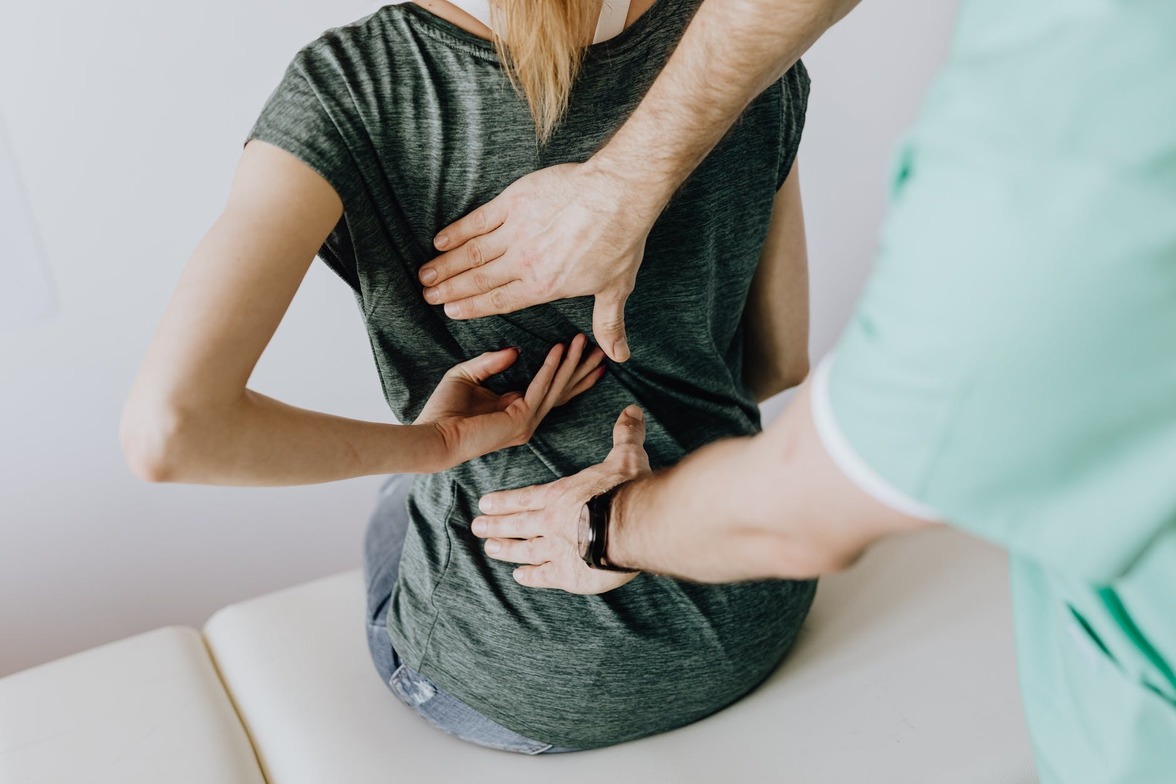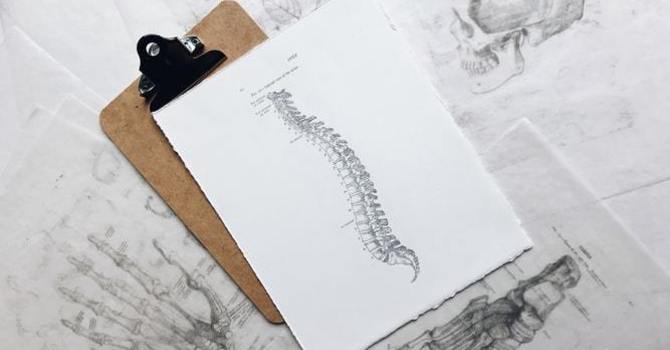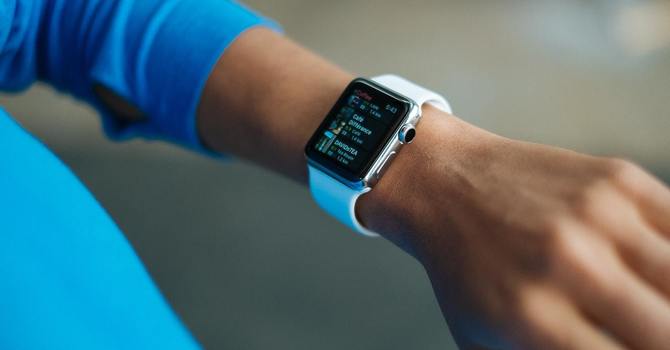
Close your eyes and visualize low back pain. You might have imagined a personal half-bent over with a hand on the sore spot of their back.
If you have experienced low back pain for yourself, you may recall feeling severely limited and helpless during the acute phase of your last episode. Those feelings are the reason why low back pain is one of the most common reasons patients seek emergency care.
Over 80% of people have experienced at least one episode of low back pain in their life, and up to a quarter have experienced an episode in the last three months. 2,3 That’s painful to just think about!
On top of that, chronic low back pain is the second most common disability in the world3, and one of the most common reasons adults visit their family physician.
Treating Low Back Pain
Physicians used to tell patients to “take it easy” when they experienced flare-ups of low back pain. The idea behind prescribing bed-rest was that avoidance of movement would relax spasming muscles and ease the pain to more tolerable levels.
We now know that this is not the proper solution to treat low back pain. Treatment guidelines now recommend specific exercise4, gentle stretches, and other methods to stay active during the recovery process. Total bed rest should be avoided.
Why The Change?
Part of the reason is anatomical. We have two types of muscles in our backs: superficial (surface) muscles and deep muscles.
Superficial muscles are used to perform motions like bending and twisting. These muscles are strengthened by exercises that put stress on the muscles. For example, lift weights at the gym to build and grow your superficial muscles.
The other type of muscles—deep muscles—help stabilize the spine and maintain posture. Exercises like yoga and walking help keep these muscles in shape. An example of this is jogging a mile or two before breakfast to work on deep muscle strength.
Here’s a common scenario to illustrate why bed rest should be avoided:
You bend over to pick something off the floor. You hear a pop in your low back, followed by pain and muscle tightness. You’re unable to stand up-right and your world is full of hurt no matter what you do.
You go to bed, and you stay there, unable to move because movement equals pain. You call off of work because you can’t get out of bed. You stay in bed, remaining sedentary, hoping to “wait it out”.
But this is the wrong way to handle your low back pain. When a person goes on a lengthy bedrest, they experience a process known as atrophy: the deep muscles in the back weaken and lose mass.6
Once the pain subsides and you feel improvement, you slowly resume activity. Since your deep muscles are weakened, your body will recruit your superficial muscles meant for bending and twisting to stabilize your posture.
The problem is, even though these muscles can function in this capacity, they are not well-adapted to it. Because of this, the superficial muscles tire easily, which results in impaired normal movement or motor control.
This puts a lot of stress on your joints and muscles in other areas of the body. This puts you at risk for additional musculoskeletal injuries.7,8
Managing Low Back Pain with McKenzie Exercises
With some specific exercises, we can strengthen the deep muscles that stabilize our posture. Chiropractors regularly prescribe exercises to address flare-up of low back pain and may suggest general activities, such as swimming or walking, to improve your overall fitness.8
Patients that suffer from an intervertebral disc injury especially benefit from some specific exercises known as “McKenzie exercises”.4 Named after the first physical therapist who used them, these are simple exercises that have very profound impacts on a patient’s low back pain.
McKenzie exercises are a staple in the conservative management of low back pain. McKenzie exercises are meant to be used after a thorough evaluation from your medical practitioner. In fact, the term “McKenzie” refers to a method of mechanical diagnosis and the series of therapeutic exercises prescribed based on the determined diagnosis.
The exercises we will be discussing in this article are just one protocol of McKenzie exercises. Though it is the most commonly followed protocol, it won’t help every patient with low back pain. This isn’t a substitute for a proper mechanical examination. This is just a tool to help patients seeking relief for their acute pain until they can get professional care.
In their most basic form, McKenzie exercises are most effective for patients suffering from intervertebral disc injuries. Disc injuries can cause a variety of low back symptoms from intense back pain to pain radiating into a lower extremity. These exercises can reduce the intensity of the pain, and may they even eliminate it completely in some patients.
When you’re experiencing a disc bulge or herniation, the disc material will often result in a protrusion on your back. There are other kinds of intervertebral disc injuries, but this is the most common.
Disc injuries are extremely prevalent in today’s population. Many people seeking treatment for these injuries will be told they have the option of rest or surgery. In some severe cases, surgery is necessary, but the body often can resorb the disc naturally. Patients can use McKenzie exercises to help their body resorb the disc.
Here’s how it works:
The McKenzie extension exercises force the spine to go into an extended position (when referencing the lumbar spine, this means an “arched” back position). This arch causes the two vertebrae to close down over the disc at the protrusion.
This “closing” of the disc space can actually cause the protruding disc material to retract back into the spine and relieve many of the symptoms associated with a lumbar spine disc injury.
Before you try these exercises, you should attention to a few things:
It’s common to experience pain when performing these exercises. After doing the exercises a few times, the pain intensity will often begin to decrease. However, if the pain gets worse and stays worse, these exercises may not be right for you.
If you have symptoms in your lower extremity (hip, knee, leg, etc.), these exercises may help reduce those symptoms too. Pay attention to the pain intensity in your leg. Has it improved? Does the pain travel as far as it did when you began? If you answered yes to either of these questions, continue with more sets and repetitions. They may be working for you!
Please note that even if symptoms in the lower extremity begin to trace back up your leg or decrease, it’s not uncommon to simultaneously have increased pain in the low back.
Yes, that sounds counterintuitive. But increased back pain is not always a bad sign if the pain in your leg is improving. Typically, when there is radiating pain in the lower extremity, to get rid of the pain completely (from the leg AND the back) the leg pain must be eliminated first.
While performing these exercises, we often see the pain tracing up the leg towards the back becoming more intense, but over a smaller surface area. The smaller the area of pain, regardless of intensity, the closer you are to getting rid of it completely!
How Do We Perform These Exercises?
Begin in a standing or prone (on your stomach) position.
If standing, put your hands at the base of your spine and drive your hips forward. The goal is to push your hips over your toes or past them. TTake the stretch to the point of pain or until you’re unable to go any further.
If prone, keep your hips on the floor and bring your hands up to your chest as if you’re doing a push-up. Push your chest up, going as far as you can without lifting your hips. If you’re in a lot of pain, you may only move a couple inches. Don’t force yourself through the pain. Let each repetition gradually improve your range through these exercises.
Repeat steps 1 and 2.
You should start with 3 sets of 10 repetitions. If the pain increases after three sets, it may not be the right exercise for your condition.
If you experience no change, or just mild improvement, perform more repetitions to see if you can create a lasting improvement. For many patients, these exercises may help decrease their overall pain, but they’re also useful for reducing flare-ups.
These are many different types of McKenzie exercises. You may require a different direction or progression of exercises. This is a great place to start if you’re on your own.
But please remember, you should get a proper evaluation from a McKenzie practitioner to determine exactly which exercises will treat your individual ailment.
Are you struggling with low back pain? Dr. Andrew Yockey at Prebish Chiropractic can help! Call today to schedule your appointment.
References
- Casiano, V.E., and De, N.K. (2020). Back pain. StatPearls. StatPearls Publishing: 2020 Jan.
- “Back pain fact sheet.” (2014). National Institute of Neurological Disorders and Stroke. Retrieved March 2020 from: https://www.ninds.nih.gov/Disorders/Patient-Caregiver-Education/Fact-Sheets/Low-Back-Pain-Fact-Sheet
- Allegri, M., et al. (2016). Mechanisms of low back pain: a guide for diagnosis and therapy. F1000Research, 5, F1000 Faculty Rev-1530.
- Casazza, B. (2012). Diagnosis and treatment of acute low back pain. Am Fam Physician; 85(4): 343-350.
- Netter, F. (2011). Atlas of human anatomy. Philadelphia, PA: Saunders/Elsevier.
- Dirks, M.L., et al. (2016). One week of bed rest leads to substantial muscle atrophy and induces whole-body insulin resistance in the absence of skeletal muscle lipid accumulation. Diabetes 65; (10):2862-75.
- Belavy, D.L., et al. (2007). Superficial lumbopelvic muscle overactivity and decreased contraction after 8 weeks of bed rest. Spine 32(1), E23-E29.
- “Low back pain.” (2020). American Academy of Family Physicians. Retrieved from https://familydoctor.org/condition/low-back-pain.





